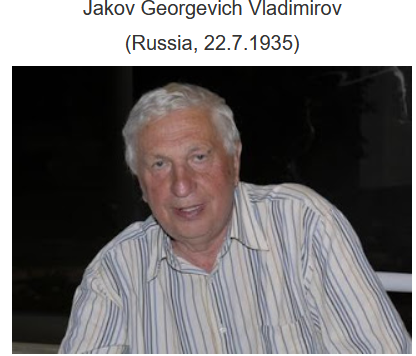 A regular on the course wins first prize in an English magazine. How is this possible with the
A regular on the course wins first prize in an English magazine. How is this possible with the  the hereditary enemy? But because the judge was Russian, he doesn't care about the Hundred Years' War, or even Joan of Arc. And he is not just anyone: J. Vladimirov is himself one of the greatest multimove composers in history (the older ones will refer to the "Revue des Echecs" n° 3). He has just honoured our friend Abdel for a very beautiful 9# problem-study: the detractors of the problem (there are some) have no excuse, because mate in 9 is also the only way to win.
the hereditary enemy? But because the judge was Russian, he doesn't care about the Hundred Years' War, or even Joan of Arc. And he is not just anyone: J. Vladimirov is himself one of the greatest multimove composers in history (the older ones will refer to the "Revue des Echecs" n° 3). He has just honoured our friend Abdel for a very beautiful 9# problem-study: the detractors of the problem (there are some) have no excuse, because mate in 9 is also the only way to win.
A long help, which does not mean boring. The right idea may even escape you for a while. And a 5# helpmate showing strategy... in 5 pieces! Two other fun multi-moves, the first one quite easy. Finally a selfmate 4-moves, a 2nd prize that seems to me better than the first prize.
A firework by the great Gurgenidzé. An astonishing complete circuit of Bishop, from another great composer, but younger.

In a desperate situation, think of stalemate. What do you mean, stalemate? With four white figures and two free pawns? This very recent Polish study is a bit reminiscent of Kazantsev's, which was demolished and never repaired in 50 years... until Pervakov took care of the matter in 2003. There is also a pinned piece and two immobilised pieces.
Today's game shows the weaknesses of a great player, which insiders had discovered more than 15 years before they became public knowledge, during a famous match.
It's time for a well-deserved break (especially for my listeners...): the next session, still God willing, is scheduled in one month, on March 15.
Have a good time.
AV
Add a comment